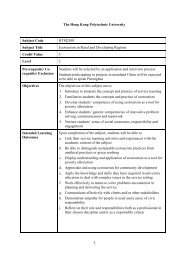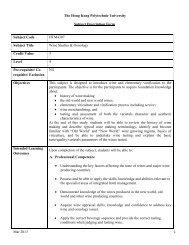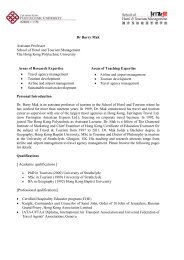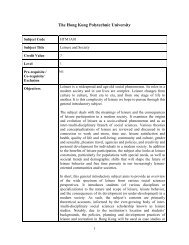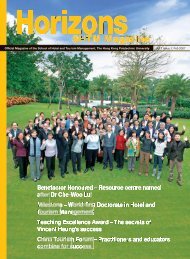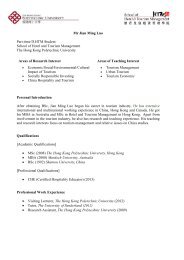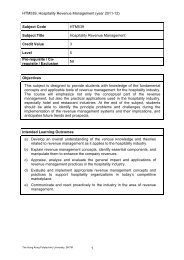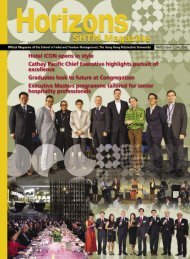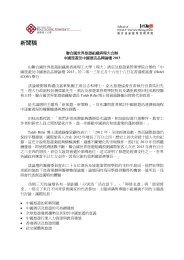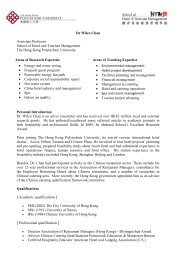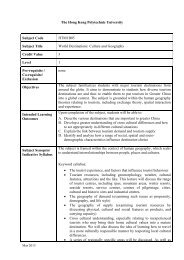SAMPLE 1 FORM RDC/1A THE HONG KONG POLYTECHNIC ...
SAMPLE 1 FORM RDC/1A THE HONG KONG POLYTECHNIC ...
SAMPLE 1 FORM RDC/1A THE HONG KONG POLYTECHNIC ...
You also want an ePaper? Increase the reach of your titles
YUMPU automatically turns print PDFs into web optimized ePapers that Google loves.
Kamins, M.A. (1990). An investigation into the 'Match-Up' hypothesis in celebrityadvertising: When beauty may be only skin deep. Journal of Advertising,19(1), 4-13.Kamins, M.A., Brand, M.J., Hoeke, S.A., & Moe, J.C. (1989). Two-sided versus onesidedcelebrity endorsements: The impact on advertising effectiveness andcredibility. Journal of Advertising, 18(2), 4-10.Kamins, M.A., & Gupta, K. (1994). Congruence between spokesperson and producttype: A matchup hypothesis perspective. Psychology & Marketing, 11(6), 569-586.King, S. (1991). Brand-building in the 1990s. Journal of Marketing Management, 7(1),3-13.Kotler, P., Bowen, J., & Makens, J. (1996). Marketing for hospitality and tourism. NewJersey: Prentice-Hall.Lafferty, B.A., & Goldsmith, R.E. (1999). Corporate credibility's role in consumers'attitudes and purchase intentions when a high versus a low credibilityendorser is used in the ad. Journal of Business Research, 44(2), 109-116.Langmeyer, L., & Walker, M. (1991). A first step to identify the meaning in celebrityendorsers. In R.H., Holman, & M.R., Solomon, (Eds.), Advances in ConsumerResearch (pp. 364-371), Provo, UT: Association for Consumer Research.Lennon, R., Weber, J.M., & Henson, J. (2001). A test of a theoretical model ofconsumer travel behaviour: German consumers’ perception of NorthernIreland as a tourism destination. Journal of Vacation Marketing, 7(1), 51-62.Louviere, J.J., Hensher, D.A. & Swat, J.D. (2000). Stated Choice Methods: Analysisand Application. Cambridge, MA: Cambridge University Press.Lynch, J., & Schuler, D. (1994). The matchup effect of spokesperson and productcongruency: A schema theory interpretation. Psychology and Marketing,11(5), 417-445.Machleit, K. A. & Wilson, R. D. (1988). Emotional Feelings and Attitude toward theAdvertisement: The roles of brand familiarity and repetition. Journal ofAdvertising, 17(3), 27-35.MacKay, K. & Smith, M. (2006). Destination advertising: Age and format effects onmemory. Annals of Tourism Research, 33(1) 7-24.MacKenzie, S. B., Lutz, R. J., & Belch, G. E. (1986). The role of attitude toward thead as a mediator of advertising effectiveness: A test of competingexplanations. Journal of Marketing Research, 23(2), 130-143.© No part of this proposal could be reproduced in any form without the permission of the author. 17



